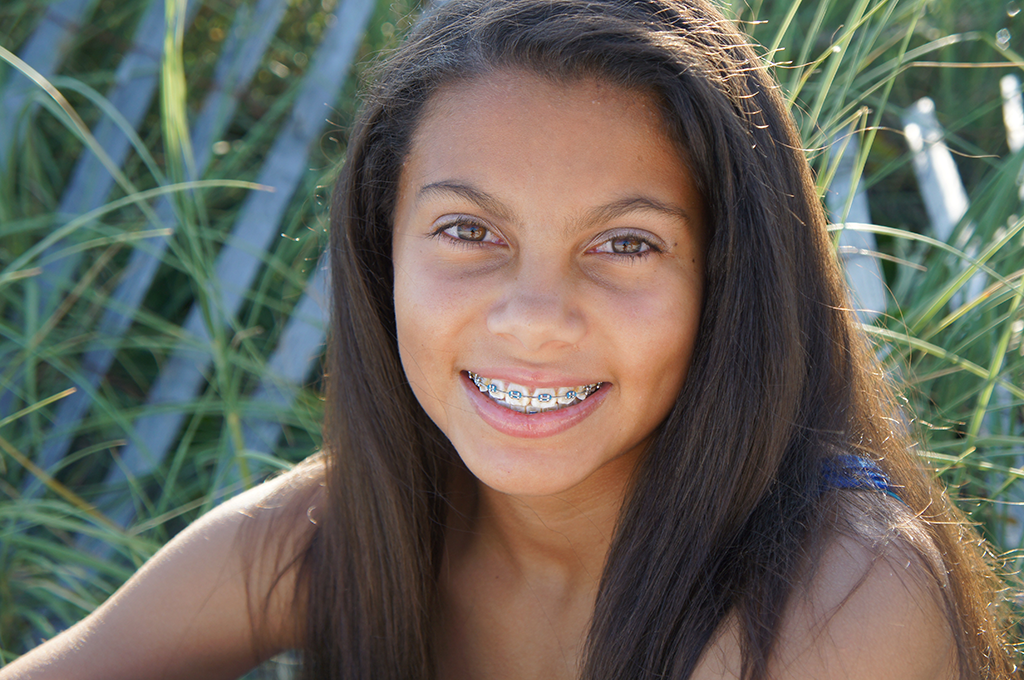
Reasons to get braces often vary because there are so many different issues that can impact the teeth and jaw. In fact, braces and other orthodontic appliances are almost always prescribed for the correction of a misalignment associated with the teeth or jaw. Sometimes, however, it can also be cosmetic.
Unfortunately, alignments issues of the teeth and jaw can lead to pain, speech, digestion, and health challenges. For that reason, they should always be addressed as early as possible. Some of the following conditions are a few that your orthodontist or dentist might encounter during a checkup. Typically, if your dentist observes any one of these conditions, he or she will refer you to an orthodontist.
Overcrowding
Teeth crowding or overcrowded teeth are frequent reasons to get braces. This occurs occur when your teeth have run out of room in your mouth. When this occurs, teeth press together but not in an aligned way. This can result in some teeth sitting higher than others. It can also result in some teeth being pushed behind or ahead of other teeth.
An overcrowded smile is difficult to brush and floss. This means that food particles and bacteria can easily build up in the nooks and crannies of your smile, especially at the gum line. This build-up can ultimately cause plaque and tartar, which may lead to gum disease.

Crooked Teeth
Misaligned teeth, crooked teeth, or crowded teeth are commonly seen in people of all ages. When the teeth erupt and grow in a way that they become overlapped, twisted, angled, or rotated, they become crowded, crooked, or misaligned. Of course, this makes teeth hard to clean and damages them.
Excess Spacing Between Teeth
Excess spacing between teeth, referred to as diastema, is actually one of the most common reasons to get braces. Spacing (the opposite of crowding), is an excess of space for your teeth which results in gaps between your teeth. This generally occurs when the teeth are smaller than the available space. Spacing can also be caused by protrusive teeth, missing teeth, impacted teeth, or abnormal tissue attachments to the gums. Gaps in teeth can also be caused by teeth that don’t grow properly, jaw size, and even incorrect swallowing reflexes. A common cause of diastema in between the front two teeth is caused by an overgrowth of the gum tissue that borders these teeth. Braces shift your smile to close the gaps in your teeth.
Overbite
An overbite is when the upper jaw overlaps the lower jaw. It is common for some patients to have a slight overbite of just one or two millimeters, but some have more serious bite issues. A malocclusion is a deep overbite where the overlap is more pronounced. It can lead to headaches and TMJ pain as they tend to clench their jaw and grind their teeth a lot. Genetics is often associated with an overbite, but chronic thumb sucking can also contribute.
Overbites can affect speech. When you have an overbite, you tend to speak more with your tongue which can affect the clarity of your words and might even give you a lisp.
Underbite
If your lower teeth are too far forward or the upper teeth are too far back, you likely suffer from an underbite. An underbite is when you close your mouth and your lower front teeth are in front of your upper teeth. In many cases, this is actually a problem with your lower jaw being too far forward. An underbite can cause an unbalanced facial appearance and accelerate aging. Braces move either your upper or lower teeth, or both your upper and your lower teeth, to correct the underbite. In severe cases, jaw surgery may be required along with braces to correct the underbite.
Crossbite
A crossbite occurs when only some of your upper teeth do not come down over the lower teeth when biting. When you close your mouth and some of your upper teeth are sitting inside your lower teeth — rather than on the outside, like they normally would — your orthodontist calls this a crossbite.
When left untreated, a crossbite leads to tooth fractures, receding gums, and asymmetrical growth of the jaw in children. Depending on the scope of the crossbite, treatment may involve the use of a palatal expander, a fixed or removable orthodontic appliance used to make the upper jaw wider. This would be used alongside an appliance designed to move the teeth, such as braces or clear aligners.

Misaligned Jaw
A misaligned jaw is a malocclusion that is best described as when your upper and lower teeth do not meet comfortably. You should check to see if you have a misaligned jaw if you have difficulty using the jaw. Also, if you have a popping, clicking, or grinding sound in the jaw. Another symptom is pain upon opening and closing the mouth, or chronic headaches or migraines.
The pressure of an abnormal bite can wear down tooth enamel, which can lead to thinning and chipping of the enamel surfaces. Braces can move your upper jaw forward or backward to help teeth meet. In severe cases, jaw surgery may be required per your orthodontist’s recommendation.
Open Bite
An open bite is a rare malocclusion. It occurs because of a birth defect, genetics, and too often as the result of prolonged thumb-sucking or the use of a pacifier. The result is the front upper and lower teeth slant outward so they don’t touch when the patient bites down. Open bites can cause biting difficulties, lisps, and other speech problems. One cause of an open bite is thumb-sucking or pacifier use. Braces work to correctly align the upper and lower teeth in open bite cases.
Excess Overjet
Overjet is the extent of horizontal distance between the upper and lower front teeth. An excess overjet is a malocclusion that occurs when there is a horizontal overlap of the maxillary central incisors over the mandibular central incisors. Not to be confused with an overbite, those with an overjet have front teeth that protrude, commonly referred to as buck teeth.

TMD
Temporomandibular disorder (TMD) is a condition that affects the temporomandibular joint that connects your jaw to your skull. In some cases, misalignment between the upper and lower teeth where the teeth meet can cause pressure on the temporomandibular joint (TMJ). In these cases of TMD, braces can offer a solution to correctly align the upper and lower teeth to prevent irregular pressure on the temporomandibular joint.
Braces can solve a host of orthodontic issues. Of course, the length of your treatment depends on the severity of your orthodontic condition. Our goal is to have a great relationship with you throughout your treatment. Part of that relationship requires you to take an active role by taking good care of your braces, eating right, and maintaining good oral health.



![How to fix error 0xc000000e windows 10 2022 100 SOLVED 11 How to fix error 0xc000000e windows 10 2022: [100% SOLVED]](https://dreamcheeky.com/wp-content/uploads/2022/06/How-to-fix-error-0xc000000e-windows-10-2022-100-SOLVED.jpg)
![how to fix Error code 0xc0000001 2022 100 FIXED 12 how to fix Error code 0xc0000001 2022 :[100% FIXED]](https://dreamcheeky.com/wp-content/uploads/2022/06/how-to-fix-Error-code-0xc0000001-2022-100-FIXED.jpg)